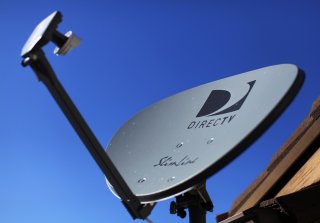RIP Cable and Satellite: Will Half of all Americans Cut the Cord?
A new survey says that nearly half of all American TV viewers are already “cordless,” and that by the end of the year, cord-cutters may very well comprise a majority of TV watchers.
Cord-cutting, or the elimination of cable or other traditional pay-TV in favor of some combination of streaming services, has gained more and more purchase over time, especially during the pandemic, as a lack of sports and a large amount of downtime caused many to drop cable.
Now, a new survey says that nearly half of all American TV viewers are already “cordless,” and that by the end of the year, cord-cutters may very well comprise a majority of TV watchers.
That’s according to the new Future of TV survey, released this week by The Trade Desk. According to that survey, “nearly half of American TV viewers are already cordless (forty-seven percent), while forty-four percent of Americans with cable TV anticipate pulling back or cutting service in the coming year.”
Those numbers, meanwhile, have reached a majority among TV viewers aged 18 to 34 and 35 to 54 (60 percent and 53 percent respectively), the Trade Desk said.
“We are entering a new TV normal, where new streaming viewing models sit side by side with traditional TV formats,” Tim Sims, Chief Revenue Officer of The Trade Desk, said in the release.
“From an advertiser’s perspective, this shift presents a tremendous opportunity. They can reach those streaming TV viewers with more precision and accuracy than ever because they can apply data to those TV campaigns in a way that’s not possible with linear. So, it provides incremental reach that’s an important element of a comprehensive TV ad campaign.”
The report also shows the importance of ads to the equation.
“According to the study, more U.S. TV viewers report watching streaming content with ads (44 percent) than without ads (33 percent),” The Trade Desk said. “Indeed, nearly two-thirds of U.S. TV viewers (64 percent) don’t want to spend more than $30 in total per month on streaming services, making free or lower-cost ad-supported services more attractive to consumers.”
This follows recent reports that analysts are pushing Netflix to add advertising for the first time ever, as many of its rivals can count on ad revenue while Netflix’s model continues to rely only on subscription revenue. Netflix has resisted doing so, however.
“Today's marketers are under a lot of pressure to prove the ROI of every advertising dollar, and that has encouraged marketers to think about how CTV can provide incremental value as part of a TV ad campaign,” The Trade Desk’s Sims said in the release.
“Advertisers want better cross channel measurement and the ability to tie that measurement to actual business outcomes. That means CTV is becoming an increasingly important component of most contemporary marketing plans.”
Stephen Silver, a technology writer for The National Interest, is a journalist, essayist, and film critic, who is also a contributor to The Philadelphia Inquirer, Philly Voice, Philadelphia Weekly, the Jewish Telegraphic Agency, Living Life Fearless, Backstage magazine, Broad Street Review and Splice Today. The co-founder of the Philadelphia Film Critics Circle, Stephen lives in suburban Philadelphia with his wife and two sons. Follow him on Twitter at @StephenSilver.
Image: Reuters

